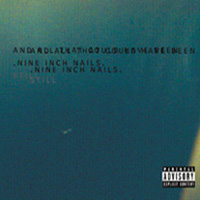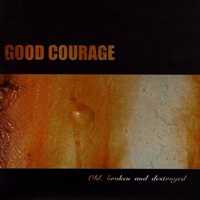 Nine Inch Nails
Nine Inch Nails
And All That Could Have Been: Still (Nothing)
by Lex Marburger
Our next letter comes from Iowa. “Dear Lollipop: What’s up with that additional disc on the live Nine Inch Nails CD? Every time I try to listen to it, I end up falling asleep. What gives? Lovin’ every minute of it, Bill.”
Well, Bill, perhaps you don’t remember all of The Downward Spiral, or his repeated missives to the press about his love for the second side of Bowie’s Low album, but Trent isn’t all sturm und drang and bombast. And hey, even industrial Goth types need to chill out on a Sunday morning with bunny slippers and a cup of tea too, yeah? So, Still isn’t supposed to rock your shit. It’s supposed to be introspective and revealing. And what does he reveal? For starters, that he doesn’t need a lot of distortion and noise effects to be a decent musician.
He begins the disc with “Something I Can Never Have,” as a purely acoustic piano and voice number. As the song peaks, he pulls his head off the mic, and you can hear the room he’s in, and the song becomes even more intimate, even though he’s screaming, because he’s put you in a space, like a living room, and it’s just him, playing his heart out (if he had a heart…). Then he goes into “Adrift and at Peace,” which brings him back to the leitmotif he created on The Fragile with “La Mer.” He creates a melody using John Cage’s “prepared piano” technique, where objects are placed between the strings of the piano, changing the sound enormously, and I should add, a little creepy. Altering the vocals slightly on “The Fragile,” he uses the song as an opportunity to begin with studio trickery, fading in live drums at the end, picking up the energy, adding a little violence into the air.
Before it gets too much, he cuts into “The Becoming,” one of the more adventurous songs on The Downward Spiral, and not just because it’s in a 13/4 time signature. He does an incredible number on it on Still, beginning it as an acoustic piano number, and then setting himself a challenge, using some of the crappiest drum machine sounds I’ve ever heard. Not only does he have to work to make us enjoy the sequencer, the thin sounds give him nothing to hide behind. The lack of sophistication forces him to give a more powerful performance, more honest. Backing off the mood, he counters the artificiality with “Gone: Still,” a beginning as a guitar/piano duet, and then adding all the requisite NIN-isms, looping minor melodies, large washes of keyboard, and a lack of motion overall. Still, indeed.
Trent gently segue’s into “The Day The Whole World Went Away,” which on The Fragile sounded like a My Bloody Valentine homage, but here sounds like a lo-fi emo tribute, something that would make K or Matador cream their jeans. And always that slow build, this time not through layers of distortion, just insistent chords, and masterful engineering. At this point, the album finally takes a turn towards what one would “typically” expect from a NIN album (although, you should know by now that Trent is rarely, if ever, typical) with “And All That Could Have Been.” To wit: Processing, sequencing, electronics, vocal effects, a throbbing beat. It could easily be a track off of either The Downward Spiral or The Fragile. It still doesn’t go completely over the top, because that would ruin the balance of Still, which is, as you have probably figured out by now, a constant balance on the edge of fury. He takes you up to the breaking point, shows you the abyss on the other side, then backs you off again, regrouping and heading back to the edge again. Still ends with two more new pieces, “The Persistence of Loss” and “Leaving Hope,” both instrumentals, both recalling previous melodic themes, and nothing if not moody. “The Persistence of Loss” toys with cellos and pianos, a guitar keeping time while background elements guide the song gently towards its conclusion, sounding for all the world like an updated Brian Eno track. “Leaving Hope” goes even further out, washing processed piano with reverb and tweaking the entire mix with noise, letting the insistent melody rise to the top before smothering it in keyboard distortion again.
That’s what you’ve been missing, Bill. So wake up already!



